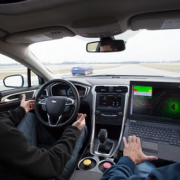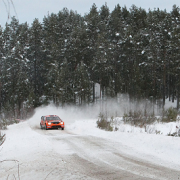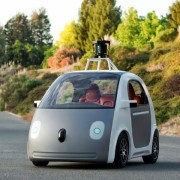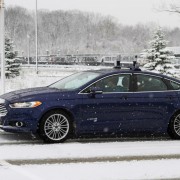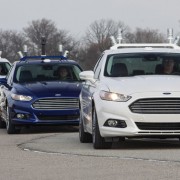News Roundup: Waymo Gets Patent For Exterior Airbags On Self-Driving Cars, Ford to Test ‘Cellular-V2X’ Tech in San Diego and More
Jennifer van der Kleut
Waymo granted patent for exterior airbags
Google’s self-driving car spinoff company, Waymo, has been granted a patent for an airbag system that would be located on the outside of a car. Since self-driving cars are outfitted with sensors, cameras, radar and lidar on the outside of the car, Waymo engineers argue that the car itself can predict an accident even sooner than a human driver can (or can’t, if he or she is distracted). The concept of exterior airbags could protect passengers in the vehicle from an impact, as well as “reduce the likelihood of severe injuries or damage to objects such as pedestrians, bicyclists, animals, other vehicles, or simply inanimate objects.” Read more from Silicon Beat.
Mcity autonomous vehicle testing ground gets big investment from automakers, corporations
Mcity, the University of Michigan’s testing ground for autonomous vehicles, has received a total of $11 million in funding from 11 different companies, both corporations and automakers. Ford, General Motors, Toyota and Honda all contributed about $1 million each, and other corporations like State Farm Insurance, Verizon, LG and others. Mcity is a 32-acre man-made “city” where companies can conduct research and test autonomous vehicles. The hub offers a number of varied conditions for vehicles to test in, such as different road conditions, four-lane highways, high-pedestrian streets featuring fake, mechanical pedestrians, and much more. Read more from HybridCars.com.
Ford partnering with AT&T, Qualcomm and Nokia to test ‘cellular-V2X’ technology
Ford Motor Co. announced this week that it has formed a partnership with Qualcomm, AT&T and Nokia to test cellular modems that can connect vehicles to each other and to roadside infrastructure to help better navigate in bad weather or construction zones. “Cellular-V2X” technology, as it is called, aims to connect vehicles with traffic lights, roadside beacons and other vehicles on the road to share real-time information about driving conditions. It’s meant to improve safety, as well as help speed up the deployment of self-driving vehicles. Testing is scheduled to take place in San Diego, California before the end of the year. For testing, Ford vehicles will be outfitted with Qualcomm hardware powered by AT&T’s 4G LTE cellular network and Nokia’s computing technology. Read more from Automotive News.
Image: Rendering of self-driving minivan with exterior airbags by Waymo

